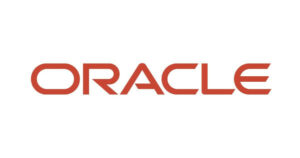
In today’s digital age, businesses are increasingly faced with the decision of choosing the right data management solution. The emergence of blockchain technology has sparked a debate about its advantages over traditional databases. As a leading blockchain development company, understanding these differences is crucial for businesses looking to optimize their operations and data management strategies.
Understanding Blockchain and Traditional Databases
Blockchain Technology
Blockchain is a decentralized digital ledger that records transactions across multiple computers in such a way that the registered transactions cannot be altered retroactively. This technology is built on principles of transparency, security, and immutability. Each transaction is grouped into blocks, which are then linked together to form a chain. This structure ensures that all participants in the network have access to the same data, thus enhancing trust among stakeholders.
Traditional Databases
Traditional databases, on the other hand, are centralized systems that store data in structured formats such as tables. These databases rely on a central authority to manage and validate transactions, making them vulnerable to single points of failure. They support CRUD operations (Create, Read, Update, Delete), allowing users to modify existing data easily.
Key Differences Between Blockchain and Traditional Databases

Advantages of Blockchain
- Enhanced Security: Blockchain employs cryptographic techniques that make it difficult for unauthorized parties to alter data. This level of security is particularly beneficial for industries where data integrity is paramount.
- Transparency and Traceability: Every transaction recorded on the blockchain is visible to all participants, which enhances accountability and trust.
- Reduced Intermediaries: By eliminating the need for intermediaries in transactions, blockchain can lead to cost savings and faster processing times.
- Global Accessibility: Blockchain networks are accessible from anywhere in the world, facilitating cross-border transactions efficiently.
Limitations of Blockchain
- Scalability Challenges: Public blockchains often face issues with scalability, leading to slower transaction processing during peak times.
- Complex Implementation: Setting up a blockchain system can be complex and requires specialized knowledge.
- Regulatory Uncertainty: The regulatory landscape for blockchain technology is still evolving, which can pose risks for businesses considering its adoption.
Advantages of Traditional Databases
- High Customizability: Traditional databases can be easily tailored to meet specific business needs due to their centralized nature.
- Mature Ecosystem: With decades of development, traditional databases have a well-established ecosystem of tools and technologies.
- Performance Optimization: They can be optimized for high performance in read/write operations, making them suitable for applications with high transaction volumes.
- Flexibility in Data Management: Traditional databases allow dynamic modifications of schemas and structures without significant overhead.
Limitations of Traditional Databases
- Security Vulnerabilities: Centralized control makes traditional databases more susceptible to breaches and unauthorized access.
- Limited Transparency: Access controls can restrict visibility into data changes, reducing accountability.
- Single Point of Failure: Centralization means that if the server goes down, access to data may be lost until it is restored.
Use Cases for Blockchain vs Traditional Databases
When deciding between blockchain and traditional databases, consider the specific requirements of your project:
Use Blockchain When:
- You need high security and immutability.
- Transparency among stakeholders is critical.
- You aim to reduce intermediaries in transactions.
- Your application involves multiple parties needing shared access to data.
Use Traditional Databases When:
- You require high performance with large transaction volumes.
- Customizability and flexibility are essential.
- Your application does not necessitate decentralization or immutability.
- You need established tools and technologies for rapid deployment.
Conclusion
Choosing between a blockchain database and a traditional database depends largely on your project’s specific needs and goals. While blockchain offers unparalleled security and transparency, traditional databases excel in performance and customization.
For businesses looking to explore blockchain solutions further, consider partnering with a reputable blockchain development company like Codezeros. Their expertise can guide you through the complexities of implementing blockchain technology effectively within your organization.
By understanding these differences, businesses can make informed decisions that align with their operational requirements and strategic objectives.
Thank you for being a part of the community
Before you go:
- Be sure to clap and follow the writer ️👏️️
- Follow us: X | LinkedIn | YouTube | Newsletter | Podcast | Differ | Twitch
- Check out CoFeed, the smart way to stay up-to-date with the latest in tech 🧪
- Start your own free AI-powered blog on Differ 🚀
- Join our content creators community on Discord 🧑🏻💻
- For more content, visit plainenglish.io + stackademic.com
Blockchain Database vs Traditional Database: Choosing the Best For Your Project was originally published in Cubed on Medium, where people are continuing the conversation by highlighting and responding to this story.








